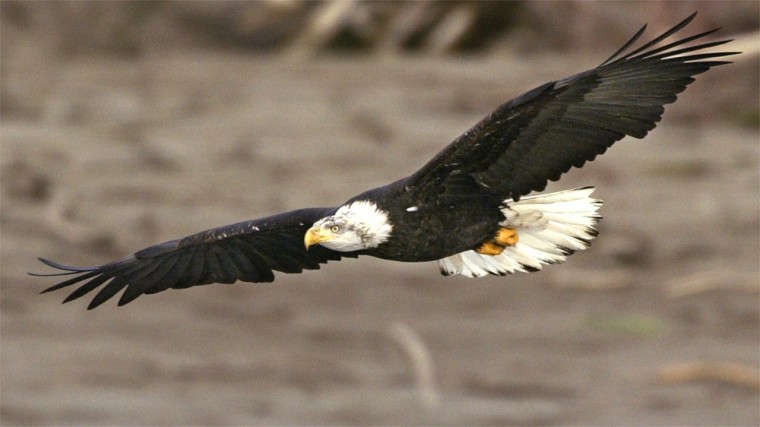So many bald eagles swoop down from the treetops to pluck their breakfast from the Skagit River, you wouldn’t think they were a threatened species.
Technically, they aren’t. But because they’re found in every one of the lower 48 states, it’s taking the federal government longer than expected to get them reclassified — an initiative the Clinton administration pitched 4½ years ago.
“It’s like Pandora’s box. It seems like a simple thing, but it’s not when you start delving into it,” said Cindy Hoffman, a U.S. Fish and Wildlife Service spokeswoman in the agency’s Washington, D.C., office.
Once the government says an animal is ready to be taken off the list, it usually takes about a year for it to happen. That’s because most federally protected species inhabit relatively small areas, Hoffman said.
Surveys in each state
The bald eagle’s territory, by comparison, stretches over much of the North American continent, with tens of thousands living in Alaska and British Columbia. The most recent survey in the contiguous United States counted nearly 6,500 nesting pairs in 2000 — up from just 417 in 1963.
Drafting a post-recovery plan for such a huge range requires updated counts in each state and directives that factor in eagle-protection rules certain states already have in place — rendering a one-size-fits-all transition impossible.
Despite its status as the nation’s symbol, eagles were frequently shot and killed throughout most of the 1800s and early 1900s, in many cases by ranchers who complained the birds preyed on their sheep. Shoreline development and logging led to widespread habitat loss, and after World War II, use of DDT and other pesticides that weakened egg shells sent the bald eagle’s birth rate plummeting.

The first move to protect the majestic birds came in 1940 with the federal Bald Eagle Protection act, later revised to include the golden eagle. In 1972, the Environmental Protection Agency banned the use of DDT, saying the bald eagle was teetering on the brink of extinction outside Alaska.
In 1978, Fish and Wildlife listed the bald eagle as endangered in 43 states and threatened in Washington, Oregon, Minnesota, Michigan and Wisconsin. By 1995, the species had rebounded enough to be reclassified as threatened throughout the lower 48.
Washington state hub
Every year from November to March, as many as 500 bald eagles flock south to the Skagit River Basin, drawn by spawning chum salmon. Several other Western Washington rivers lure impressive numbers of eagles, including the Sauk, Siuattle, Skykomish, Stillaguamish and Nooksack.
Wintering eagles spread far and wide — from northern California to Montana to Arizona — but no state hosts more of them year after year than Washington. Some stay year-round, but most migrate north to breed.
In mid-January, at the peak of this year’s wintering season, one rafting guide counted about 150 bald eagles on a 5-mile stretch of the Skagit River.
“People get kind of jaded after seeing 100 of them,” Dave Button, owner of Pacific Northwest Float Trips, said while paddling a group of eagle-watchers down the lower Skagit. “They say, ’Oh, what’s next?’ We get spoiled on this river.”
Like Button, Shane Turnbull has been rafting the Skagit for decades and still marvels at the sight of eagles diving down from the tops of the alders and cottonwoods lining the river. “When the fish are really thick, they’re like wild pigs,” he said of the birds’ voracious appetites.
Bald eagles started meeting recovery goals in Washington state in the mid-1980s, and by the late 1990s, they were so abundant, the state Department of Fish and Wildlife stopped conducting annual population surveys.
Once an animal loses Endangered Species Act protection, the government is required to monitor it for five years to make sure the population remains healthy.
“The birds are doing quite well ... and we need to direct our resources toward species that are more endangered and who need more attention,” said Julie Stofel, a threatened and endangered species biologist in the agency’s Mill Creek office.
